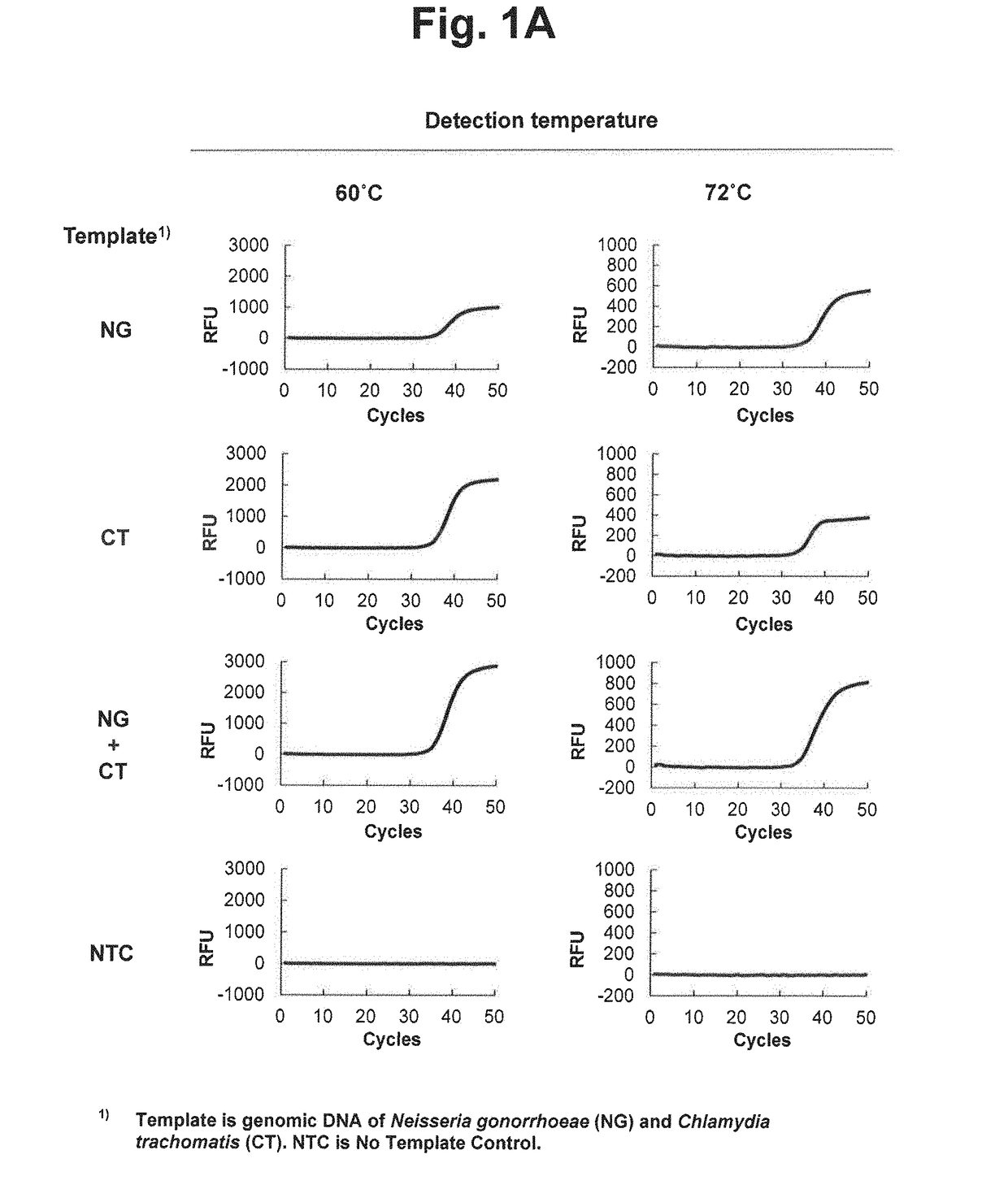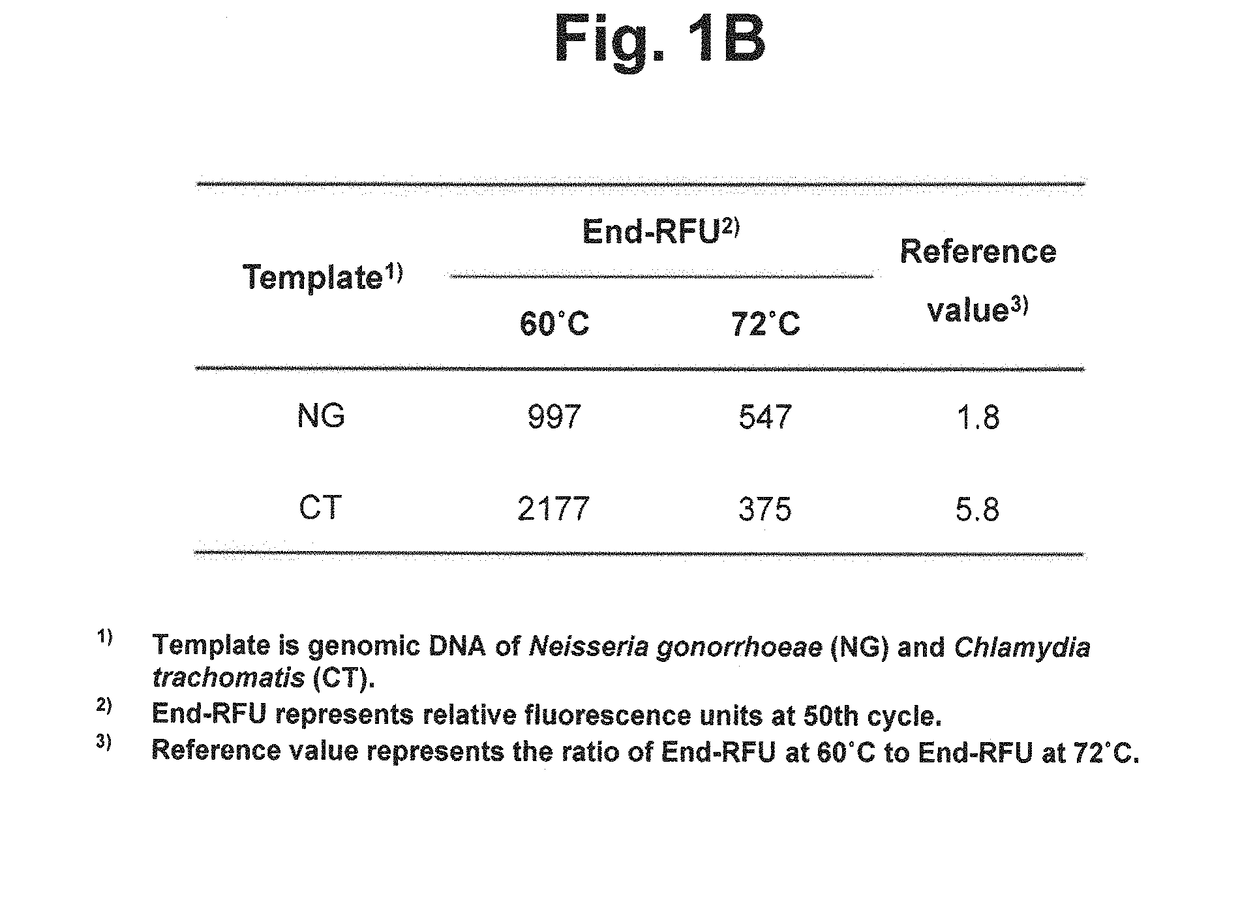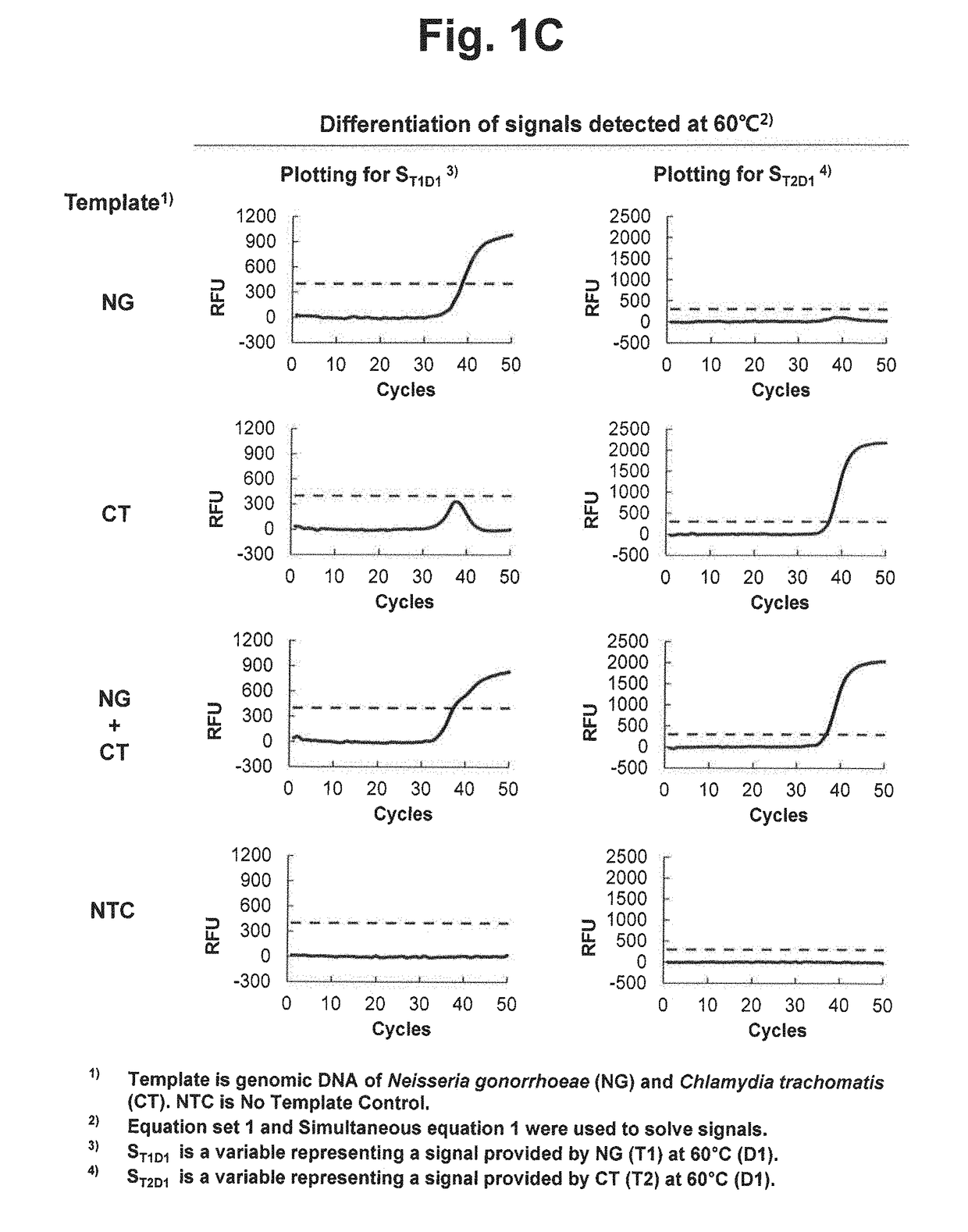Differentiation of signals for target nucleic acid sequences
a nucleic acid sequence and target technology, applied in sequence analysis, instruments, biochemistry apparatus and processes, etc., can solve the problems of longer performance time and difficult design of probes with different tsub>m /sub>values, and achieve enhanced convenience, cost-effectiveness and efficiency, and accurate and convenient manners
- Summary
- Abstract
- Description
- Claims
- Application Information
AI Technical Summary
Benefits of technology
Problems solved by technology
Method used
Image
Examples
example 1
t Detection by Performing TaqMan Real-Time PCR Comprising Signal Detection at Different Temperatures and Solving Equations
[0504]We examined whether two target nucleic acid sequences can be detected in a single reaction vessel by using a single detection channel and TaqMan real-time PCR comprising signal detection at different temperatures. Equations with variables representing signals of interest detected at the two detection temperature were setup and solved for differentiating the signals of interest and determining the presence or absence of target nucleic acid sequences.
[0505]Taq DNA polymerase having a 5′ nuclease activity was used for the extension of upstream primers and downstream primers and the cleavage of a TaqMan probe. Genomic DNA of Neisseria gonorrhoeae (NG) and genomic DNA of Chlamydia trachomatis (CT) were used as target nucleic acid sequences. Four types of samples (NG, CT, NG+CT and no template control) were prepared and analyzed.
[0506]TaqMan real-time PCR was emp...
example 2
t Detection by Performing PTOCE Real-Time PCR Comprising Signal Detection at Different Temperatures and Solving Equations
[0528]We examined whether two target nucleic acid sequences can be detected in a single reaction vessel by using a single detection channel and PTOCE real-time PCR comprising signal detection at different temperatures. Equations with variables representing signals of interest detected at the two detection temperature were setup and solved for differentiating the signals of interest and determining the presence or absence of the target nucleic acid sequences.
[0529]Taq DNA polymerase having a 5′ nuclease activity was used for the extension of upstream primers and downstream primers, the cleavage of PTO, and the extension of PTO fragment. Genomic DNA of Neisseria gonorrhoeae (NG) and genomic DNA of Chlamydia trachomatis (CT) were used as target nucleic acid sequences. Four types of samples (NG, CT, NG+CT and no template control) were prepared and analyzed.
[0530]PTOCE...
example 3
get Detection by Performing TaqMan / PTOCE Real-Time PCR Comprising Signal Detection at Different Temperatures and Solving Equations
[0550]We examined whether triple target nucleic acid sequences can be detected in a single reaction vessel by using a single detection channel and TaqMan / PTOCE real-time PCR comprising signal detection at different temperatures. Equations with variables representing signals of interest detected at the three detection temperature were setup and solved for differentiating the signals of interest and determining the presence or absence of the target nucleic acid sequences.
[0551]Taq DNA polymerase having a 5′ nuclease activity was used for the extension of upstream primers and downstream primers, the cleavage of TaqMan probe, the cleavage of PTO, and the extension of PTO fragment. Genomic DNA of Neisseria gonorrhoeae (NG), genomic DNA of Chlamydia trachomatis (CT), and genomic DNA of Mycoplasma genitalium (MG) were used as target nucleic acid sequences. Eight...
PUM
| Property | Measurement | Unit |
|---|---|---|
| temperature | aaaaa | aaaaa |
| temperature | aaaaa | aaaaa |
| temperature | aaaaa | aaaaa |
Abstract
Description
Claims
Application Information
 Login to View More
Login to View More - R&D
- Intellectual Property
- Life Sciences
- Materials
- Tech Scout
- Unparalleled Data Quality
- Higher Quality Content
- 60% Fewer Hallucinations
Browse by: Latest US Patents, China's latest patents, Technical Efficacy Thesaurus, Application Domain, Technology Topic, Popular Technical Reports.
© 2025 PatSnap. All rights reserved.Legal|Privacy policy|Modern Slavery Act Transparency Statement|Sitemap|About US| Contact US: help@patsnap.com



